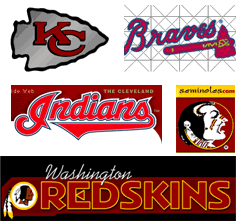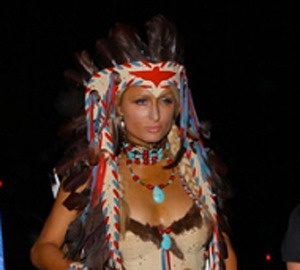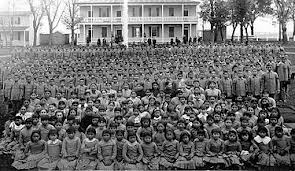The “Great Peace” an
American Utopia.
The irony of genocide, negative stereotyping, and the false portrayal
in history books of Native Americans is that the United States owes its very existence
to the “American Indian.” Native tribes like the Lenni Lenape or Delaware in northeastern
America had perfected pure democracy and lived egalitarian (Leiser 1). Settlers who traded with the tribes envied
the fact that even the youngest female of a tribe was given the opportunity to
vote and speak freely before a council fire on all important matters related to
the Indians (1). Many settlers left
their settlements, accepted adoption by the tribe, and lived as Native
Americans rather than suffering as a serf in the colonies under the rule of a
Governor for the King. A famous fictional
literary character named “Hawkeye” from the classic book, “The Last of the Mohicans" , is demonstrative of this phenomenon.
The concept of a “United States” came from the Iroquois League, a confederacy of six
Indian Nations in New York and Pennsylvania (Reynolds 1). Benjamin Franklin in 1754 suggested, “If six
tribes of ignorant savages could form a defense union and keep it going for
ages, so could we”, to representatives from the English colonies who were
looking for a way to rid themselves of the French Forts close to them. Although, Franklin was ignored at the time, the
idea eventually stuck and materialized during and after the American Revolution.
(The Iroquois Longhouse and the Chiefs of the Six Nations or the Iroquois League)
Due to interracial marriages and adoptions by
tribes it soon became hard to distinguish “Indian” from “White man” on the frontier. The frontier moved as the country grew and though their was much official repression those "Whites" who lived in the wilderness with Native Americans usually conformed to their environment and learned to live peacefully with their neighbors. Racists could not tolerate this and it became the mission of racists in the government to separate the people by official and unofficial means.
(An Interracial family, Native American and White, from the 1800's)
(Settlers and Native Americans often look indistinguishable from each other)
The concepts of “individual liberties” and the “respect for
minorities “owes a great deal to the Delaware or Lenni Lenape people and especially
to one of their great chiefs, ”Tammaned”, as he was known to the Lenape, or as ,”Tammany”,
as he was known to the settlers (Leiser 1).
Tammany
was a great Lenape leader who worked diligently to provide for his people
through his relationship with William Penn founder of Pennsylvania (1). Tammany
was born in 1628 in what would soon become Pennsylvania; his name means “Easy
to talk to", in his Unami dialect. He and William Penn visited each other’s homes, shared in feasts
and traded goods. Tammany presented Penn with a wampum belt which survives
today at the Historical Society of Pennsylvania in Philadelphia (1). His image
has been immortalized in many places, including a natural rock formation in the
Delaware Water Gap National Recreation Area. From Route 611, south of the
village of Delaware Water Gap, one can look across the Delaware River and see
the rock profile of Tammany, chief of the Lenni Lenape (1).
(Tammany's face on the Mountain)
(Statue of Tammany along the Delaware River in Philadelphia)
Tammany is best known to early Americans as the
personification of the, “Honest Indian, “positive stereotype of Native
Americans. Under the name
"Tammany", the great chief was a popular figure in America,
especially in Philadelphia (Leiser 1). Referred to as the, "Patron Saint
of America", he became an emblem of peace and amity. Tammany famously said
that the Lenni-Lenape and the English colonists would, "Live in peace as
long as the waters run in the rivers and creeks and as long as the stars and
moon endure." For sixty years this
statement held true. This is the time in Pennsylvania history known as the “Great
Peace”.
While other colonies and settlers stayed in a constant state
of war with its native inhabitants, Pennsylvanians lived in Peace with the Lenape
and they thrived together. Unfortunately, this Utopia of the “New World” would
be destroyed by the heirs to William Penn.The Lenape, like all other great tribes, would eventually be forced on migrations
of hundreds of miles to reservations too. However, the seeds of negotiated peace” and “minorities
being treated as equals were planted in the minds of citizens as something to
strive for. Next time you celebrate Independence Day you should take time to remember the contribution that Native Americans gave to make this "Land of the Free and home of the Brave".
For a brief time in American history “Native Americans” and “Americans”
lived harmoniously. Each respected each others cultures and thrived together.
Unfortunately, greed and hatred soon destroyed this American Utopia but
the fact that for more than half a century peace held gives me hope that in
the future we can once again coexist in harmony. A good start would be to give
back lands stolen from the tribes where possible or pay reparations in
different ways where it is not. We must
stop making the “Native American” a source of mythology and respect them instead
as living people who deserve justice for damages done to them so we may heal
together.
References
Leiser, A. (2005). William Penn and Lenape Chief Tammany. Monroe County Historical Association, 1. Retrieved from http://www.monroehistorical.org/articles/files/110105_wmpenn.html
Reynolds, P. M. (1988). Colorful characters of Pennsylvania. Willow Street, PA: Red Rose studio.
.jpg)
.jpg)

.jpg)
.jpg)
.jpg)
.jpg)



.jpg)
.jpg)
.jpg)

.jpg)


.jpg)
.jpg)












